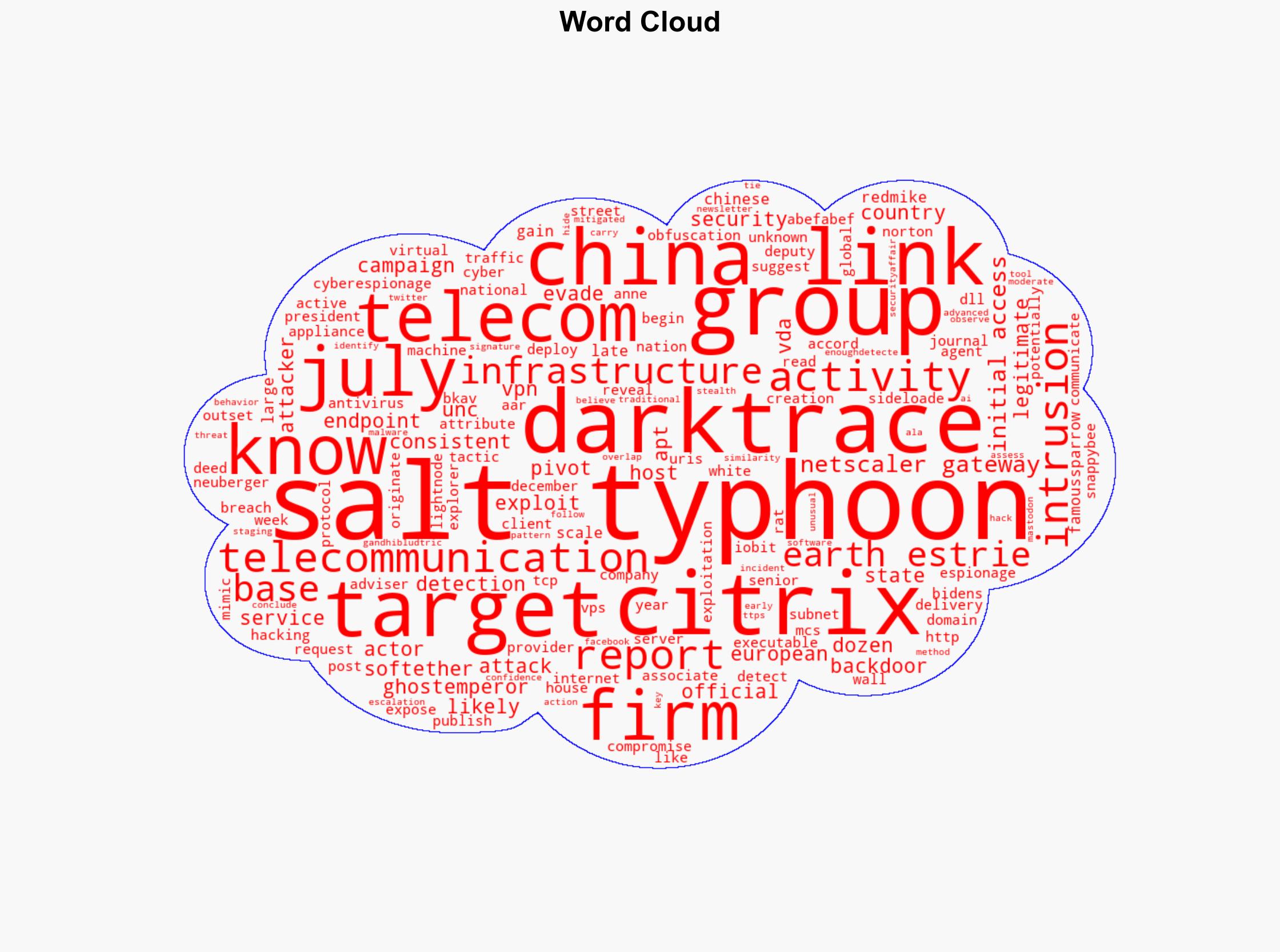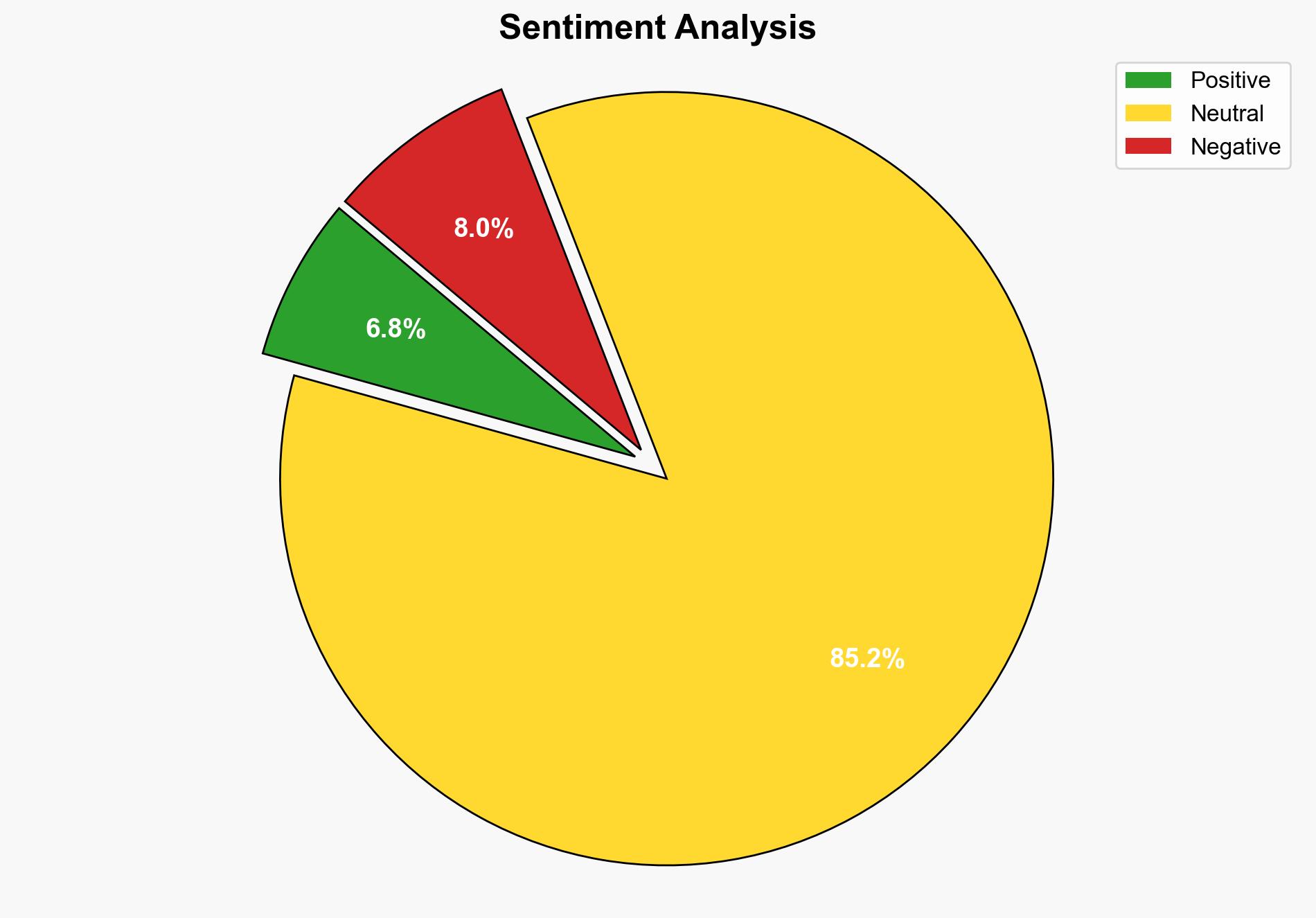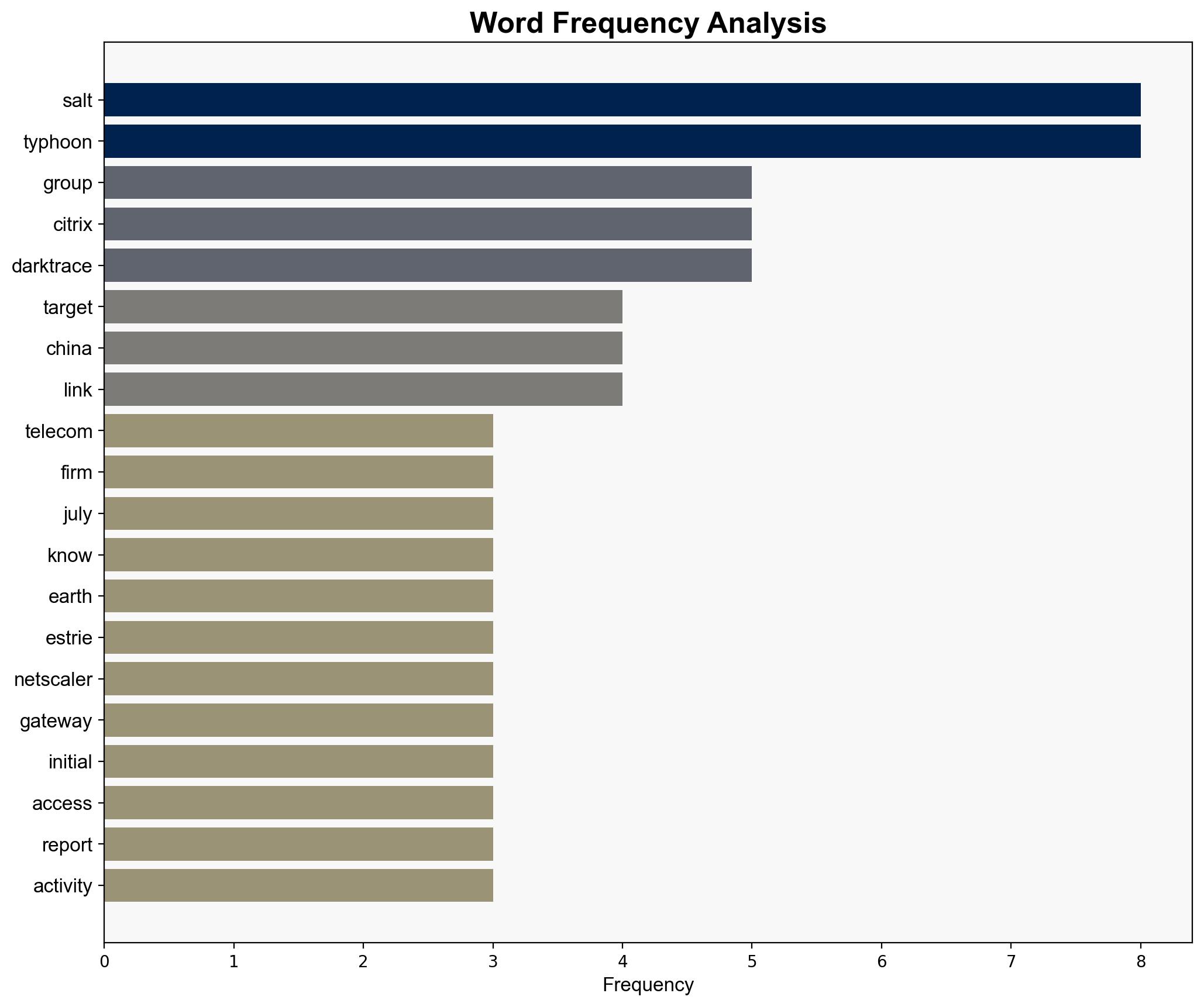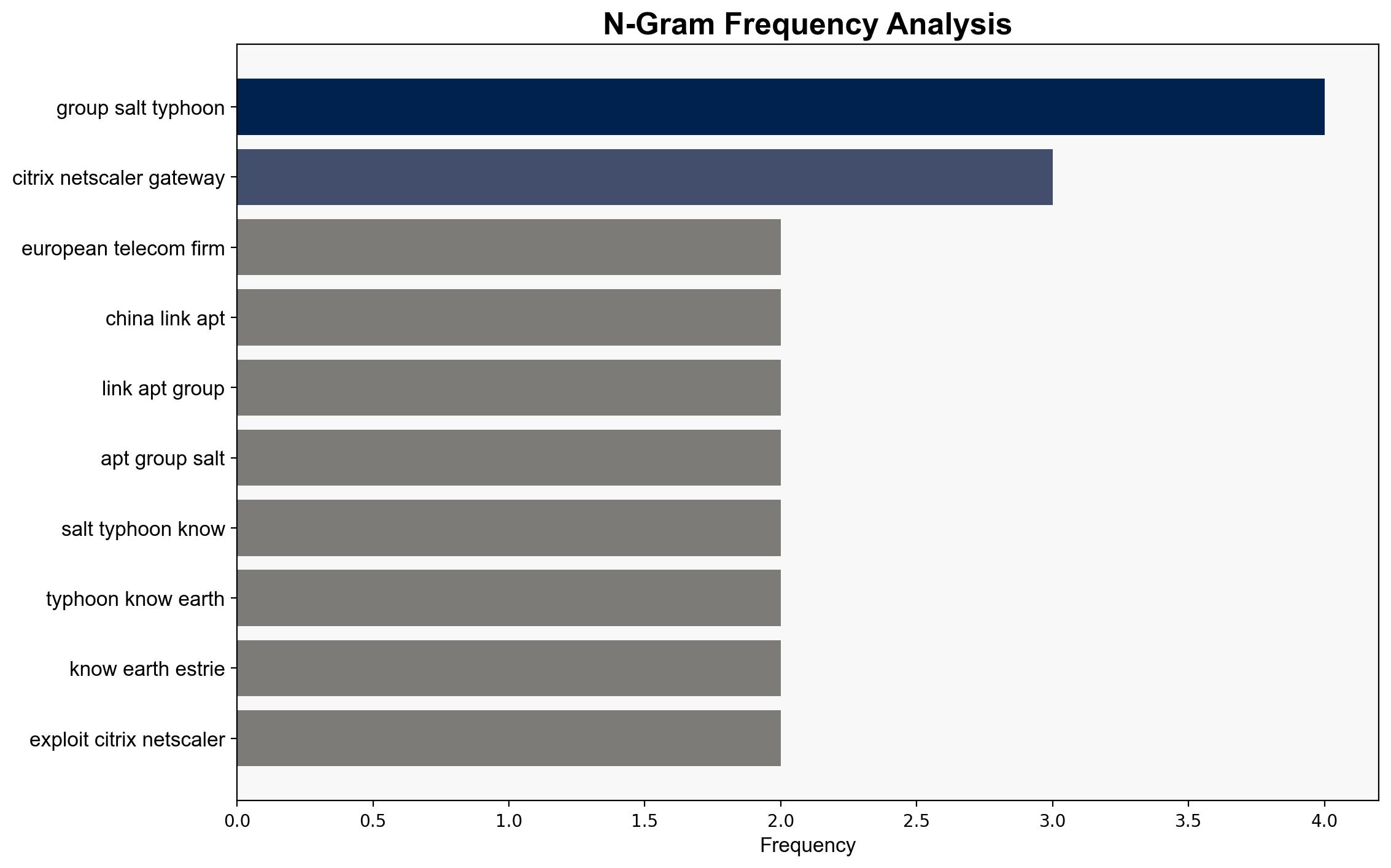China-Linked Salt Typhoon breaches European Telecom via Citrix exploit – Securityaffairs.com
Published on: 2025-10-21
Intelligence Report: China-Linked Salt Typhoon breaches European Telecom via Citrix exploit – Securityaffairs.com
1. BLUF (Bottom Line Up Front)
The most supported hypothesis is that the cyber intrusion into the European telecom firm was executed by the China-linked APT group Salt Typhoon, utilizing a Citrix exploit as part of a broader cyberespionage campaign. The confidence level in this assessment is moderate, given the alignment of tactics, techniques, and procedures (TTPs) with known Salt Typhoon activities. Recommended actions include enhancing cybersecurity measures, particularly around Citrix systems, and increasing intelligence sharing among affected nations.
2. Competing Hypotheses
Hypothesis 1: The breach was conducted by the China-linked APT group Salt Typhoon, leveraging the Citrix Netscaler Gateway exploit as part of a coordinated cyberespionage campaign targeting global telecommunications.
Hypothesis 2: The breach was conducted by an independent cybercriminal group using similar TTPs to Salt Typhoon, potentially to mislead attribution efforts and exploit the geopolitical tensions between China and Western countries.
Using Analysis of Competing Hypotheses (ACH), Hypothesis 1 is better supported due to the consistency of TTPs with previous Salt Typhoon activities and the strategic alignment with China’s known cyberespionage objectives. Hypothesis 2 lacks direct evidence and relies on the assumption of deliberate deception.
3. Key Assumptions and Red Flags
Assumptions include the attribution of the attack based on TTP similarities and the geopolitical context suggesting state-backed motives. Red flags include the potential for misattribution due to the use of common cyber tools and infrastructure, and the limited direct evidence linking Salt Typhoon to the specific breach.
4. Implications and Strategic Risks
The breach underscores vulnerabilities in critical infrastructure, highlighting the risk of increased cyberattacks on telecommunications. It may escalate geopolitical tensions, particularly if attribution to a state actor is confirmed. Economically, it could lead to increased costs for cybersecurity measures and potential disruptions in telecom services.
5. Recommendations and Outlook
- Enhance monitoring and security protocols for Citrix systems and related infrastructure.
- Foster international cooperation for intelligence sharing and joint cybersecurity initiatives.
- Scenario-based projections:
- Best Case: Strengthened defenses and international cooperation deter future attacks.
- Worst Case: Continued cyberattacks lead to significant disruptions and geopolitical conflicts.
- Most Likely: Ongoing cyber threats necessitate sustained vigilance and adaptive security measures.
6. Key Individuals and Entities
Anne Neuberger, President Biden’s Deputy National Security Adviser, is mentioned as a source of information regarding the attribution of the attack to Salt Typhoon.
7. Thematic Tags
national security threats, cybersecurity, counter-terrorism, regional focus




